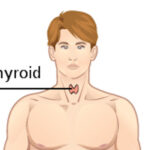Morning Health Talk :
New Delhi, May 11, 2018 :
Clinical
- Eating 12 eggs in 1 week was apparently not tied to an increase in cardiometabolic risk factors among people with type 2 diabetes (T2D), according to Diabetes and Egg (DIABEGG) study.
- Researchers at the University of Illinois at Urbana-Champaign has shown the health benefits of walnut’s wrinkly shell, and they published their results in The Journal of Nutrition. Walnut intake increases levels of Faecalibacterium, Roseburia, and Clostridium. These three bacteria produce a metabolic byproduct called butyrate, which has been shown to improve colon health.
- The number of disease cases from mosquitoes, ticks and fleas tripled in the United States from 2004 to 2016
- Tick-borne diseases: Anaplasmosis/ehrlichiosis, Babesiosis, Lyme disease, Powassan virus, Spotted fever rickettsiosis and Tularemia
- Mosquito-borne diseases: California serogroup viruses, Chikungunya virus, Dengue viruses, Eastern equine encephalitis virus, Malaria plasmodium, St. Louis encephalitis virus, JE, West Nile virus, Yellow fever virus, Zika virus
- Cyclosporine A used to treat rheumatoid arthritis and Crohn’s disease, as well as to prevent the body from rejecting transplanted organs. As a side effect, it also triggers hair growth.
AMR
Scientists have shown that using wastewater from dairy farms for soil irrigation can enhance the presence of antibiotic resistance genes in soil. The antibiotics most frequently detected in the dairy wastewater samples were lincomycin, chlortetracycline, monesin, oxytetracycline, and sulfadimethoxine.
In UTI when antibiotics are needed, the shortest course that is likely to be effective should be prescribed to reduce the risk of antimicrobial resistance. It might be more appropriate to get a back-up prescription to be used only if symptoms do not improve within 48 hours or if they worsen rapidly or significantly at any time.
Mind’s Vision
We might not be able to be the best, but we can always be better than the rest. ( Dr Avdesh)
Research
J Am Coll Cardiol. 2015 Jun 2;65(21):2279-87: Indoor exposure to fine particulate matter (PM2.5) from outdoor sources is a major health concern. The researchers conducted a randomized, double-blind crossover trial among 35 healthy college students in Shanghai, China, in 2014. These students lived in dormitories that were randomized into 2 groups and alternated the use of true or sham air purifiers for 48 h with a 2-week washout interval. They measured 14 circulating biomarkers of inflammation, coagulation, and vasoconstriction; lung function; blood pressure (BP); and fractional exhaled nitric. Air purification resulted in a 57% reduction in PM2.5 concentration, from 96.2 to 41.3 μg/m3, within hours of operation. Air purification was significantly associated with decreases in geometric means of several circulating inflammatory and thrombogenic biomarkers. Systolic BP, diastolic BP, and fractional exhaled nitrous oxide were significantly decreased by 2.7%, 4.8%, and 17.0%.
Dr KK Aggarwal
Padma Shri Awardee
Vice President CMAAO
President HCFI






